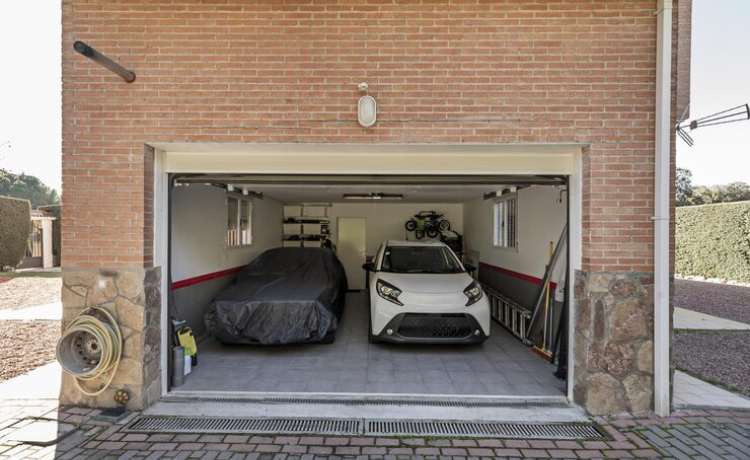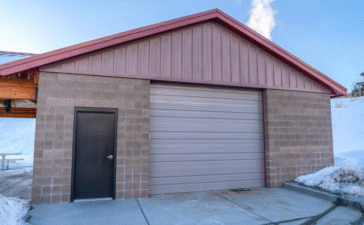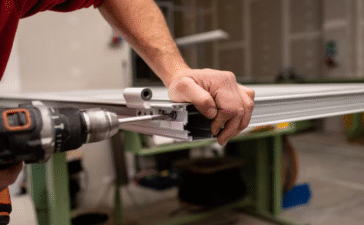Choosing the right garage size is a more significant decision than many homeowners realize. It’s not just about having a place to park your cars; it’s about creating a functional space that meets your current and future needs. With vehicles getting larger and household storage needs expanding, a well-planned garage can significantly enhance your home’s value and usability. An undersized garage can lead to daily frustrations, from dinged car doors to a lack of space for essential storage. Ensuring your garage can comfortably accommodate your vehicles while leaving room for storage, hobbies, or a small workshop is crucial. The type of vehicles you own whether it’s a compact sedan, a large SUV, or a work truck directly influences the ideal dimensions. This guide will walk you through everything you need to know about standard 2 car garage size, helping you make an informed decision that you’ll be happy with for years to come.
Standard 2 Car Garage Size Dimensions
When planning a two-car garage, understanding the different standard dimensions is the first step. These sizes cater to various needs, from basic vehicle protection to expansive multi-use spaces.
Minimum Size for a Two-Car Garage: 20×20 ft
The absolute minimum size for a two-car garage is typically 20 feet wide by 20 feet deep (20×20 ft). This compact footprint can house two smaller sedans, but it leaves very little room for anything else. Parking can be tight, and opening car doors requires care to avoid hitting the walls or the other vehicle. While this size is a cost-effective solution and suitable for smaller properties, it offers limited flexibility. Larger vehicles, like most SUVs and trucks, will likely not fit comfortably, if at all.
Recommended Size for Comfort: 24×24 ft
For most homeowners, a 24×24 ft garage is the recommended standard. This size provides a significant upgrade in comfort and utility. The additional four feet in both width and depth make parking much easier, allowing ample room to open doors fully without risk of damage. This extra space also creates opportunities for storage along the walls, a small workbench, or a place to keep bicycles and lawn equipment. A 24×24 ft garage strikes an excellent balance between functionality and cost, accommodating a wider range of vehicle sizes, including most mid-size SUVs.
Larger Dimensions for Oversized Vehicles: 24×30 ft or 24×36 ft
If you own large trucks, full-size SUVs, or recreational vehicles, you’ll need to think bigger. A garage that is 24 feet wide and 30 to 36 feet deep provides the necessary length for longer vehicles. The increased depth also creates a substantial area at the back of the garage for a dedicated workshop, extensive shelving, or storage for bulky items like kayaks or ATVs. These larger dimensions offer maximum flexibility and future-proof your space for any vehicle upgrades you might make down the line.
How to Choose the Right Garage Size
Selecting the perfect garage size depends on a careful evaluation of your specific requirements.
Consider Your Vehicle Size
Start by measuring your current vehicles, but don’t stop there. Remember to account for open doors and the space needed to walk around them comfortably. A small SUV like the Honda CR-V is about 15 feet long, while a large SUV like the Chevrolet Suburban is over 18 feet long. A Ford F-150 truck can be nearly 21 feet long. It’s wise to plan for the future. You may upgrade to a larger vehicle, so building a garage that can accommodate that change will save you headaches later.
Plan for Storage and Workshop Areas
A garage is rarely just for cars. Think about what else you need to store. Do you have bicycles, lawnmowers, sports equipment, or holiday decorations? Plan for dedicated storage space with shelving units, overhead racks, or cabinets. If you’re a DIY enthusiast, you’ll want to incorporate a workbench and tool storage. A deeper garage, such as a 24×28 ft or 24×30 ft model, provides this extra utility space without compromising parking.
Custom Garage Design Considerations
Your needs might require a custom design. If you have a lifted truck, you’ll need a taller garage ceiling and a higher garage door. For boat storage, extra depth is essential. Customization allows you to create a space perfectly tailored to your lifestyle, whether that means adding extra windows for natural light in a workshop or reinforced flooring for heavy equipment.
Standard Garage Door Sizes and Options
The garage door is a critical component that needs to be matched to your garage and vehicle size.
Standard 2 Car Garage Door Sizes
A standard double garage door is typically 16 feet wide and 7 feet tall. This size is sufficient for most cars and mid-size SUVs. However, other common widths include 14 feet and 18 feet. For larger vehicles, an 8-foot-tall door is recommended to provide adequate clearance. Choosing a wider door, like an 18-foot model, can make parking two vehicles significantly easier.
Other Garage Door Features to Consider
Modern garage doors offer more than just access. Insulated doors are a great investment, especially if your garage is attached to your home or used as a workspace, as they improve energy efficiency and regulate temperature. Automatic openers are a standard convenience, but consider models with smart features that allow you to control the door from your phone. Security is also paramount, so look for doors with robust locking mechanisms and durable materials like steel or aluminum.
Common Garage Design Mistakes to Avoid
A little foresight can help you avoid common pitfalls in garage design.
Underestimating Space Needs
One of the most frequent regrets is building a garage that’s too small. Homeowners often forget to account for the space needed to open car doors, walk around vehicles, or add storage. Always err on the side of a larger garage if your budget and property allow. Think about your future needs, not just your current ones.
Not Accounting for Maneuvering
A garage that’s technically large enough but has a difficult entry or tight corners will be a constant source of frustration. Ensure the driveway approach allows for easy maneuvering into the garage. Inside, maintain a clear buffer zone around where the cars will be parked to make daily use more convenient and prevent accidental bumps and scrapes.
Tips for Maximizing Space in a Two-Car Garage
Even in a well-sized garage, smart organization is key to making the most of your space.
Vertical Storage Solutions
Take advantage of your garage’s full height. Wall-mounted shelving, pegboards for tools, and overhead ceiling racks are excellent for getting items off the floor. This frees up valuable floor space and keeps your garage organized and accessible.
Create a Multi-Use Workshop
Designate one area of your garage as a workspace. A fold-down workbench can be a great space-saving solution. Install good lighting over this area and organize your tools on a nearby wall rack. This creates a functional zone for hobbies and home projects without interfering with parking.
Practice Smart Organizational Hacks
Regularly declutter your garage to get rid of items you no longer need. Use clear, stackable bins for storage so you can easily see what’s inside. Group similar items together all your gardening supplies in one corner, car care products in another—to create a logical and efficient layout.
You would also like: “2 car garage dimensions“
What Garage Size is Right for You?
Ultimately, the best two-car garage size depends entirely on your individual circumstances. A 20×20 ft garage may suffice for a homeowner with two compact cars and minimal storage needs. However, the recommended 24×24 ft size offers a much more comfortable and versatile space for the average family. For those with large vehicles or significant storage and workshop ambitions, investing in a larger footprint like 24×30 ft will pay dividends in functionality and long-term satisfaction.
Careful planning is the most important step. Consider your vehicles, your storage needs, and how you envision using the space in the years to come. A well-designed garage is a valuable asset that makes daily life easier and adds significant value to your home.
Frequently Asked Questions
What is the minimum recommended size for a two-car garage?
The minimum size is 20×20 feet, but this is considered tight for two modern vehicles. The highly recommended size for comfort and functionality is 24×24 feet, which allows for easier parking and additional storage space.
Can a standard two-car garage fit two SUVs?
A minimum 20×20 ft garage will be very tight for two SUVs. To comfortably fit two mid-size or full-size SUVs and have room to open doors, a garage of at least 24×24 feet is strongly recommended. For two large SUVs, a 24×28 ft or even 26×28 ft garage is a better choice.
What is the standard height for a garage?
The standard ceiling height for a residential garage is 8 feet. However, if you have a large truck, van, or plan to install a vehicle lift, a ceiling height of 10 feet or more is preferable.
How much does it cost to build a two-car garage?
The cost varies widely based on size, materials, location, and features. On average, building a detached two-car garage can range from $20,000 to $70,000 or more. A basic 20×20 ft garage will be on the lower end, while a larger, insulated 24×30 ft garage with custom features will be at the higher end of the spectrum.
What size garage door do I need for a standard 2 car garage size?
The most common door size for a two-car garage is a single 16-foot-wide by 7-foot-tall door. This accommodates most standard vehicles. An 8-foot-tall door is a better option for larger trucks and SUVs. Alternatively, some homeowners prefer two separate 8-foot or 9-foot wide doors.
Is it worth building an oversized garage?
For most homeowners, yes. The extra space in an oversized garage provides incredible flexibility for storage, a workshop, or a home gym. It also future-proofs the space for larger vehicles and increases your home’s resale value, making it a worthwhile investment.












